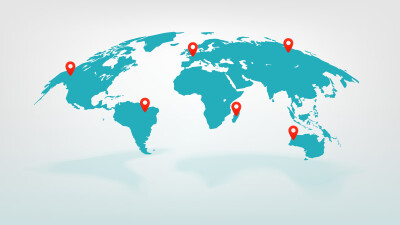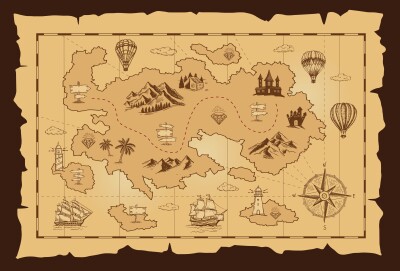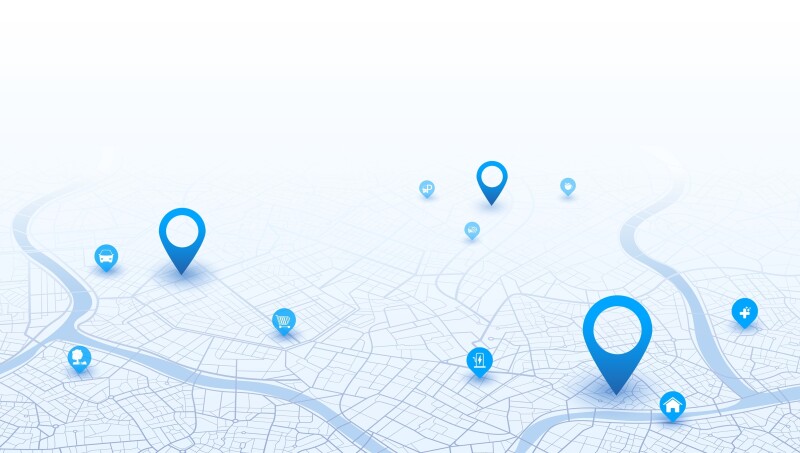In December of 2022, the Linux Foundation – which specializes in bringing together foundations in a number of different sectors with a focus around open source and open data – announced the bringing together of some of the world’s largest companies with an ambitious goal. The formation of the Overture Maps Foundation, boasting founding members Amazon, Meta, Microsoft, and TomTom, was created with a mission “to build reliable, easy-to-use, and interoperable open map data.”
In a relatively short amount of time, OMF has already reached some major milestones, quite the accomplishment given the breadth of their goals and the stature of the companies involved in its founding, which have since been joined by over 20 additional companies. Their path is something that we have, of course, covered extensively here at Geo Week News, including the release of their original preliminary dataset, their goals for the 2024 calendar year, and a talk given at Geo Week 2024 by Executive Director Marc Prioleau. As the foundation continues to make its mark on the mapping industry, Geo Week News was interested in hearing perspective on how the formation of this group came to be, and recently spoke with Mike Harrell, SVP of Engineering Maps with TomTom.
Harrell comes to this discussion from a fascinating perspective, having worked for a number of large companies before joining TomTom, including others involved with OMF, giving some prior knowledge on how things operate within large companies. His roles, which included those within and outside of geospatial realms, also gives him a strong sense of the path these industries have taken to deciding that an open, collaborative map is the optimal path forward.

This goes back to his time at Microsoft, spanning 2007 to 2015, a time when Microsoft decided to build their own map “like every other company,” according to Harrell. He says that this was common in the industry that every big tech company believed they could build their own map. With Microsoft, he says, they knew maps could be better than what was being done at the time.
“We had all these new sensors that were out there on the roads, all these new machine learning algorithms, and we were like, Wow, we’re going to be able to do it quicker, faster, and more efficiently than anybody else.”
Harrell does say that they did, in some ways, achieve those goals, making a map at high quality and large scale more cheaply than anyone else in the world, but that it was still extremely expensive. Ultimately, that division was sold off to Uber, who also had grand plans for making their own map, which also never truly came to fruition. This was the theme of the time – companies deciding they will be better off building their own map, only to find out it’s far more difficult and expensive than anticipated.
During this time, Harrell transitioned to Amazon but out of the geospatial sector, before joining TomTom a couple of years ago. They mentioned that they were strategically moving toward an open mapping strategy, and it hit him that the industry was “finally figuring it out.”
“When I was at Microsoft, it was clear that each company trying to do mapmaking on their own was not actually a viable path for any company. In reality, there was going to be a better way, and it was going to be collaborative map making and some level of open map making.”

That realization that building a map was significantly more difficult than these companies originally believed started the industry on the path towards launching the Overture Maps Foundation, but it didn’t immediately reach there. First, OpenStreetMaps was the first place to turn, something that you can see looking at past data. Within this research paper is a look at OSM engagement over the mid-2000s into the 2010s, and you see a sharp uptick around 2013 in members, a signal of where the industry was going. Eventually, companies moved on to create OMF.
Beyond the path that led to the creation of OMF, Harrell provides a couple of key insights further into that journey and what, he believes, OMF offers that makes it the solution for which the industry has been searching. Firstly, he points to where the difficulties lay in creating your own map. Intuitively, many companies believe it’s fairly easy, and for the first 80 percent they’re correct. However, he says that those who have been in the space for a long time know that the work isn’t getting that first 80 percent right. It’s getting the rest, and also never getting things wrong.
Additionally, the market is changing. “The other aspect of it is - if we were still making the same map that customers demanded 10, 20 years ago, then it would be really cheap and easy,” Harrell said. “But when we put all these sensors out on the road, and we thought, Okay, we’re going to make a really easy map, clean and cheap – well with all of those sensors on the road, they demand a higher quality, better map, so demand for features in accuracy and everything else are exponentially increased along with all of this stuff.”

The other major piece that is more specific to OMF is the creation of the Global Entity Reference System, or GERS. As defined by OMF themselves, GERS “is a framework for structuring, encoding, and matching map data to a shared universal reference. All features in Overture Maps have a unique id, and for some feature types that unique id is registered to GERS.”
Basically, this allows information to be easily communicated by different systems and different maps. Harrell said, “In the world we had before, to paint a picture of where we were, we had all of these isolated little islands. You had the HERE map, the TomTom map, the Google map, the OSM map, and if you put data in one of those ecosystems and conflated into that, you could not move or communicate the data in the other ecosystem. They literally would not communicate at all - it basically just kind of froze and was freezing the industry’s innovation in a significant way.”
It’s been a long, but extremely necessary journey for some of the largest companies in the world to ultimately understand that the best quality map for everyone is going to involve involvement from the entire industry in open and collaborative ways, which is the ethos of OMF in a nutshell. The foundation still has a ways to go, having just released their first beta a little over a month ago, but Harrell sees a bright future that needs more collaboration.
“The biggest thing for us is continuing to improve and advancing our base offerings so we can drive further adoption on the base map. Everybody’s using GERS, so that requires much more coverage and quality in the places dataset. We need to give [the beta] some time to ensure that it’s stable, and it’s something people can meaningfully depend on as part of their commercial offerings.”






